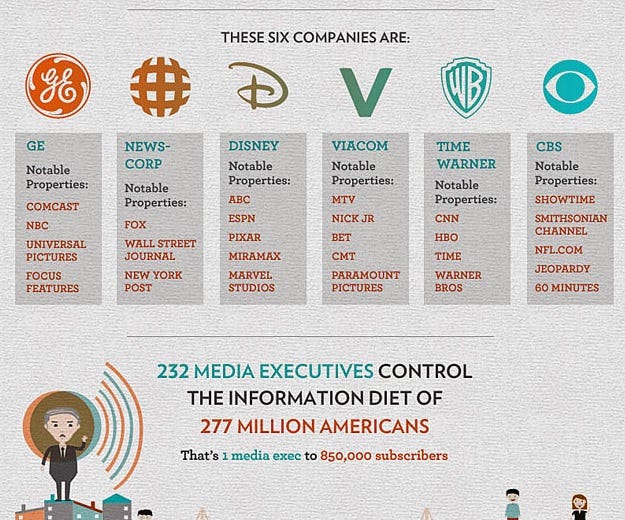By Kent R. Kroeger (Source: NuQum.com; October 28, 2018)
Megyn Kelly was fired by NBC because she was an unapologetic conservative on a network at war with conservatives, at least the Trump variety. That’s my opinion, at least.
But few in the media explain her firing that way.
NBC cited Megyn Kelly’s insensitive ‘blackface’ comments as the proximate cause of their ending the network’s relationship with the mercurial TV host. The New York media critics were quick to reference Kelly’s mediocre TV ratings as the more substantive factor. And still other media snarks suggest Kelly’s dishonest attempt to pose as an ‘apolitical’ morning show personality was doomed from the start.
“The truth is, I am kind of done with politics for now,” Kelly told the audienceon her NBC morning show’s first day.
Initially, the TV ratings for Megyn Kelly Today were underwhelming — certainly not what corporate NBC expected when it signed Kelly to a 3-year, $69 million contract.
“[NBC News Chairman] Andrew Lack made the mistake with Megyn Kelly [from the beginning] with the decision to hire her to an anachronistic celebrity contract in the mistaken belief that star quality could turn into ratings gold,” said Andrew Tyndall , a television news analyst and consultant, told The Wall Street Journal.
When Kelly impolitely asked Jane Fonda about her extensive history with plastic surgery, the critics were quick to jump on Kelly’s weak celebrity-interview skills. Even Fonda’s surgery-mutilated face had enough elasticity left to show her disgust with Kelly’s ‘inappropriate’ line of questioning.
The awkward Fonda interview was great television, even if there wasn’t much of a home audience to see it.
Month’s later, in response to Fonda’s continued complaints about how she was treated on Megyn Kelly Today, Kelly’s petulant response to Fonda’s complaints revealed the real story.
“If Fonda really wants to have an honest discussion about older women’s cultural face, then her plastic surgery is tough to ignore,” opened Kelly’s rejoinder. “When she came here, however, again to promote her film about aging, I was supposed to discern that this subject was suddenly off-limits.”
Then the conservative, flame-throwing Kelly re-emerged from hyper-sleep:
“I have no regrets about that question nor am I in the market for a lesson from Jane Fonda on what is and is not a appropriate. After all, this is a woman whose name is synonymous with outrage. Look at her treatment of our military during the Vietnam War; many of our veterans GIs called her Hanoi Jane thanks to her radio broadcast which attempted to shame American troops. She posed on an anti-aircraft gun used to shoot down our American pilots. She called our POWs hypocrites and liars and referred to their torture as understandable. Even she had to apologize years later for that gun picture. But not for the rest of it, by the way. She still says she is not proud of America.”
The real Megyn Kelly was destined to be fired by NBC
Kelly, whose demeanor during interviews can change from breezy to combative as quickly as she tilts her head, is a master-class practitioner of the ambush interview: let the guest talk at first; once they’ve burned through their prepared talking points, ask a loaded question; get the interviewee off-balance; and spend the rest of the interview hammering on a small set of conservative talking points while taunting and pestering the guest into oblivion. While the technique rarely enlightens audience, it often makes for great (though sometimes too cringe-inducing to watch) television.
Kelly’s Fox News interview with Malik Shabazz, National President for Black Lawyers for Justice, during the 2016 Republican Convention is a textbook example of her interviewing style:
As Shabazz explained his views on racial bias in the country’s criminal justice system, Kelly offered this follow-up question: “Do you believe white people are inherently evil?”
In vain, he tried to redirect the conversation back to systemic racial bias, only to have her cut him off again with this prosecutorial gem of a question: “Do you use the term cracker to refer to white people?”
Exhausted by that point, Shabazz accused Kelly of deviating from the subject matter, prompting her to say, “No, I want the audience to know what you stand for?”
No, Megyn, you really didn’t want your audience to understand what this man stood for — had that been your motivation, your approach to the interview would have been entirely different. Your goal was to embarrass and shame him in your pursuit of entertaining the Fox News audience.
And you know what? Interviews like the one with Shabazz is what made Kelly the household name she became on Fox News. That is why NBC paid her $69 million to bring her act to their network.
In the right context, she is worth that kind of money.
Her ambush interviews made her rich and famous — her peers in the business were few. She could make Sean Hannity and Bill O’Reilly squirm when she threw her head-tilt-with-stink-eye-glare in their direction — and towards the end of her tenure at Fox News, she did that a lot.
But, of course, presumably NBC was hoping Kelly would leave the ‘conservative’ stuff back at Fox News. After all, she had just become public enemy number one among Donald Trump supporters for her sharp-tongued presidential debate question directed at the candidate regarding his past verbal abuse of women. As NBC signed her up for three years, she seemed genuinely unleashed from the ideological shackles imposed by the Fox News system.
The honeymoon didn’t last long. In fact, there didn’t seem to be any honeymoon period between Kelly and NBC. Her short-lived Sunday evening news program died as quickly as it was thrown together. Even a Vladimir Putin interview failed to generate ratings.
By the time Megyn Kelly Today was launched in September 2017, there were already industry rumors that she was over-bearing, aloof and roundly disliked by her NBC colleagues. Her latest book, after all, was titled Settle for More. In it, she basically admitted she can be a b*tch to work with and doesn’t spend a lot of time worrying about other people’s fragile egos.
Its not like Kelly was hiding her personality traits from the NBC senior brass. They got exactly the person they thought they were getting — but they did believe the ‘conservative’ Kelly would be replaced by something more…centrist, even a little bit liberal.
Boy, were they wrong.
Kelly was only a few weeks into her morning show when she could barely stomach the cast of Will & Grace as they promoted their show’s pointless relaunch. Kelly was no phony that day. She didn’t care for the show to begin with and wasn’t going to sit there and mindlessly enable its comeback. Kelly oozed contempt and the Will & Grace cast did not appreciate it.
The Jane Fonda brouhaha would soon follow and the network by then was already leaking stories to the entertainment press that Kelly’s show was failing.
“Bad ratings.” “Her personality doesn’t work well with the morning audiences.” “Her talent doesn’t match her ego.”
The truth?
Most new shows struggle with ratings at the onset. While Kelly was a big name in prime-time cable TV news, her fame did not necessarily follow her to weekday mornings. She would have to earn those viewers, as she did at Fox News.
In April, The Wall Street Journal reported that Kelly’s ratings were down 18 percent from what that hour pulled for NBC a year earlier, and down 28 percent among viewers aged 25–54, the most coveted morning show demographic.
Adding to the ratings decline was the difficulty Kelly’s show had in booking A-list guests, particularly after she infuriated Fonda, who was more than happy to use her fame and industry clout to scare away other celebrities from appearing on Megyn Kelly Today.
Yes, Kelly’s show was struggling for ratings.
“It averaged about 2.4 million viewers a day, while its direct competitor, ABC’s Live with Kelly and Ryan, leads the time slot with 3 million,” according to The Hollywood Reporter’s Marisa Guthrie. “Kelly’s show also was off 400,000 viewers from the (cheaper) show it replaced.”
That is normally a formula for a show’s cancellation.
However, networks actually care more about the ad dollars from a show, not necessarily its audience ratings. And, in that regard, Megyn Kelly Today was not failing at all. According to the ad spending tracker service, Kantar Group, in the first six months of 2018, Kelly’s show earned $65.8 million in advertising — a 26 percent increase over the year-earlier period, when that hour was hosted by NBC Today Show veterans Tamron Hall, Al Roker, Willie Geist, and Natalie Morales.
It is unlikely audience ratings alone are behind NBC and Kelly parting company.
So, was it really Kelly’s insensitive remarks about racism and blackfaceHalloween costumes that led to her demise?
Here is the exact quote of what Kelly said on her show about racism and blackface costumes:
“But what is racist? Because you do get in trouble if you are a white person who puts on blackface on Halloween, or a black person who puts on whiteface for Halloween. Back when I was a kid that was OK, as long as you were dressing up as, like, a character.”
For the record, the 47-year-old Kelly grew up in DeWitt and Albany, New York. I find it exceedingly difficult to believe that blackface Halloween costumes were prevalent or tolerated in upstate New York in the 1970s. But, if Kelly says so, I’ll take her at her word.
Nonetheless, while Kelly’s blackface observation was ill-considered and mildly insensitive, it was hardly a firing offense. Much, much more was behind her firing than that off-the-cuff remark — a remark I would sooner believe she premeditatedly planned in order to get herself fired.
When viewed in the show’s full context, Kelly’s ‘blackface’ comment didn’t fit well in the panel discussion. It was a needless remark and begged the question, “Why say that?” In fact, it felt almost rehearsed, as if she knew the comment would be provocative and she was waiting for the right moment to launch it.
And why would she do that? Conservative Megyn Kelly was miserable at NBC. She knew she had made a bad career move — which is probably why she fired her agent immediately after being dumped by NBC — and most likely wants to get back to prime-time news where her skills are still valued.
Arguing against my assertion that Kelly pre-planned the ‘blackface’ comment to expedite her own firing is her on-air apology the next day. Her eyes were puffy. She looked like emotionally drained. She didn’t look or sound like someone about to receive a generous golden parachute and the freedom to move on to something much, much better.
“I was wrong and I am sorry,” she pleaded to her studio audience.
It was her brand’s lowest moment ever.
For those of us that have watched Megyn Kelly Today on a daily, weekday basis, her show’s tone became darker and more openly conservative in the last few months. The show was still nothing like her Fox News program, but she began to incorporate her courtroom law experience more often into the show.
She was more combative, included more newsy content, and was becoming more like the Megyn Kelly from her Fox News days.
In the past year, Kelly has interviewed a man falsely accused of rape (which was a direct attack on the #MeToo movement), highlighted the unfair physical advantage transgender athletes often possess when they are allowed to participate in girls high school sports, and unceremoniously pounded anti-Trump actor Tom Arnold into dust for his alleged stalking of The Apprenticeproducer Mark Burnett.
The Fox News Kelly is now back, but what should be her next move?
Possible landing spots for Megyn Kelly
There are three likely landing spots for Kelly: (1) Fox News, (2) CRTV, and (3) The Blaze.
Though one should never say never, it is highly improbably that Kelly would return to the network that made her famous. She tried not to burn bridges on her exit from Fox, but anytime a move like that is made, feelings will get bruised. Furthermore, the current Fox News prime-time lineup does not have an obvious weak link.
If Kelly were to replace Tucker Carlson, who is extremely popular among Fox News staff and executives, a mutiny might materialize. As for her replacing Laura Ingraham, that also seems unlikely. For one, Ingraham always seems one annoyance away from becoming an active shooter. If Kelly were to replace her, Ingraham would not go down quietly. Second, Ingraham’s later time slot would not be attractive to Kelly, who would prefer Hannity’s 9pm slot. And Hannity is still the big cheese at the network. The Israelis and Palestinians will agree to peace before Hannity and Kelly ever do.
Fox News is a bad fit.
Instead, Kelly might consider CRTV, a conservative media outlet founded by Mark Levin. But, again, there is a lot of bad blood between Kelly and Levin, particularly after her open hostility to Trump during the 2016 election. And their feud goes back even farther than that (see video below).
In contrast, The Blaze, a conservative-leaning network founded by Glenn Beck, may offer Kelly the best chance to start with a clean slate. Beck, in fact, has been openly and aggressively supportive of Kelly during the blackface controversy and it is well-known that Beck is looking for prime-time talent to lift his network’s TV service.
Beck is a measured speaker not prone to random thoughts. If he were trying to attract Kelly to his network, the first thing he would do is heap praise upon her from his broadcast pulpit.
Of course, The Blaze cannot pay Kelly anything close to NBC’s $69 million. But what the network can do is offer her an ownership share and total control over the network’s prime-time lineup.
Today, The Steve Deace Show sits in the most coveted weekday, prime time slot on The Blaze. A fellow Iowan, Steve Deace is smart and entertaining, but his show is re-purposed radio, not prime time quality.
To hire Kelly would be a bold move on Beck’s part and a risky one for Kelly, but she deserves to back on prime-time and The Blaze may be the best fit given Kelly’s past history with other conservative networks.
The political Megyn Kelly is coming back — and when she arrives— the prime-time cable news landscape will be more interesting for it.
-K.R.K.


















